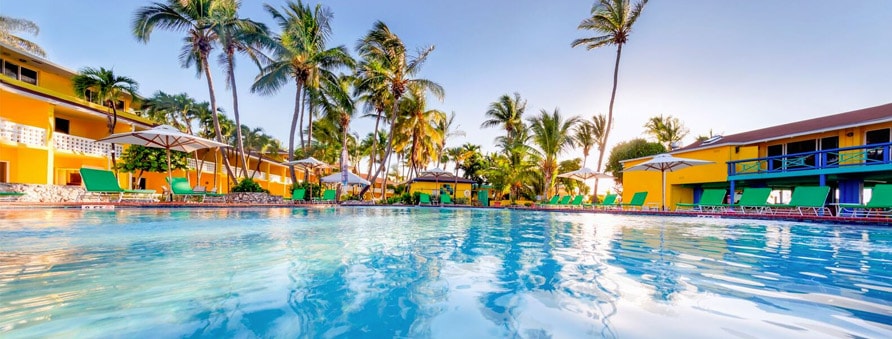Bimini Big Game Club & Marina, Bahamas

The Bimini Big Game Club Resort + Marina is perched seaside with views of tranquil bonefish flats and offshore mangrove islands that make up the small island chain of Bimini. This holiday can be combined with a short liveaboard and itineraries include Tiger Sharks, Great Hammerheads, Dolphins, Reef Sharks, Stingrays and Oceanic White Tips.
Founded in the 1930’s as an elegant dinner club, the Bimini Big Game Club has a rich history hosting world-class fishermen, avid divers, and dignitaries alike. The resort offers the best of the Bahamas whether you are taking a break from a fast-paced lifestyle, looking to catch the 1,000 lb Blue Marlin or exploring the undersea mysteries of the infamous Bimini Road.

- Accommodations:
- The resort features 51 guest rooms, cottages, and suites.
- You’ll find comfortable lodging options for your stay.
- Marina:
- The marina offers 75 slips, accommodating boats up to 140 ft LOA (Length Overall) with a controlling depth of 9 feet mlw (mean low water).
- On-site Bahamian Customs and Immigration services are available.
- Electricity options include 100/200 + 30, 50, and 100 amp service.
- City water and free Wi-Fi are provided.
- Security patrols ensure safety.
- Bathrooms and showers are conveniently located adjacent to the marina.
- Dining and Entertainment:
- Bimini Big Game Bar & Grill: Enjoy delicious meals with marina views.
- Sharkies: A great spot for waterside events and fish frys.
- Hemingway’s Poolside Rum Club: Relax by the freshwater swimming pool.
- Bimini Pizza: Satisfy your pizza cravings.
- Dive Center:
- The on-site Neal Watson Bimini Scuba Center offers various dive experiences:
- Reef dives
- Shark dives (including great hammerhead safaris)
- Wreck dives
- Dolphin dives
- Caves and walls
- Mystical Atlantis Road exploration
- The on-site Neal Watson Bimini Scuba Center offers various dive experiences:
- Other Amenities:
- Swimming Pool: Take a dip and unwind.
- Great Lawn: Perfect for relaxation.
- Meeting Space: Available for events.
- Outfitters Store: Get liquor, bait, ice, and other essentials.
- Beach: Just a 3-minute walk away.
- Golf Cart Rentals: Explore Bimini easily.
- Medical Clinic: Approximately ¼ mile away.
- Fuel: Available nearby.
- Shark-Free Marinas Initiative:
- Bimini Big Game Club supports this initiative, promoting responsible sport fishing and shark conservation in Bahamian waters.
Intinerary
Neal Watson’s Bimini Scuba Center provides an array of exciting dive experiences in Bimini, The Bahamas. Here are some highlights:
- Great Hammerhead Safaris:
- Season: All year round.
- Description: Plunge into the blue waters of Bimini and encounter the iconic Great Hammerhead Shark. These safaris offer thrilling encounters with these majestic creatures
- Stingray Safari:
- Description: Get up close and personal with Southern Stingrays at Honeymoon Harbour. Snorkelers can also enjoy this adventure.
- Reef Shark Safari:
- Description: Dive with reef sharks and witness their grace and power in their natural habitat1.
- Ocean Safaris:
- Wild Dolphins: Swim with wild dolphins.
- Photograph Great Hammerheads: Capture stunning images of these sharks inches away from your dome port.
- Bullrun Shark Cage: Available to both divers and non-divers for a unique experience
- Dive Sites:
- Explore Bimini’s coral reefs, blue holes, and canyons.
- Encounter marine life ranging from tiny reef fish to turtles, dolphins, and eagle rays.
- Dive the Bimini Barge, Victories, Tuna Alley, and Little Caverns.
Whether you’re a seasoned diver or a snorkeler, Bimini’s underwater world awaits!
